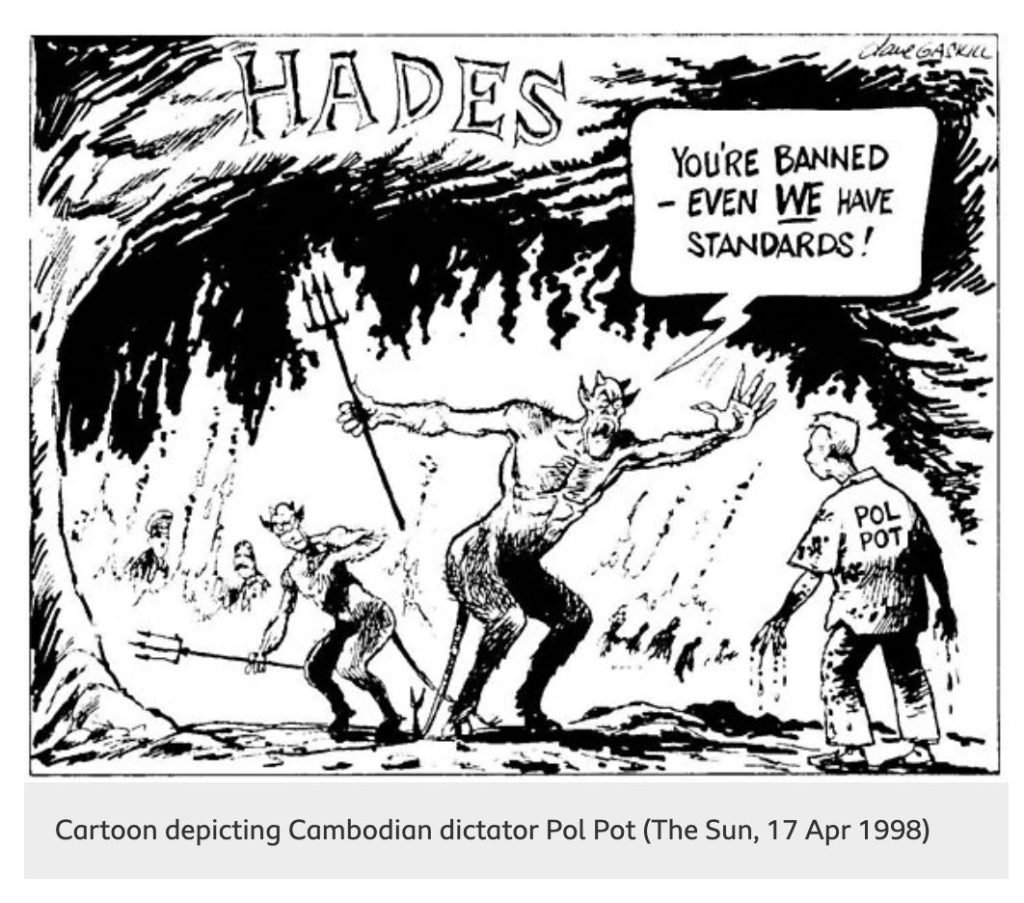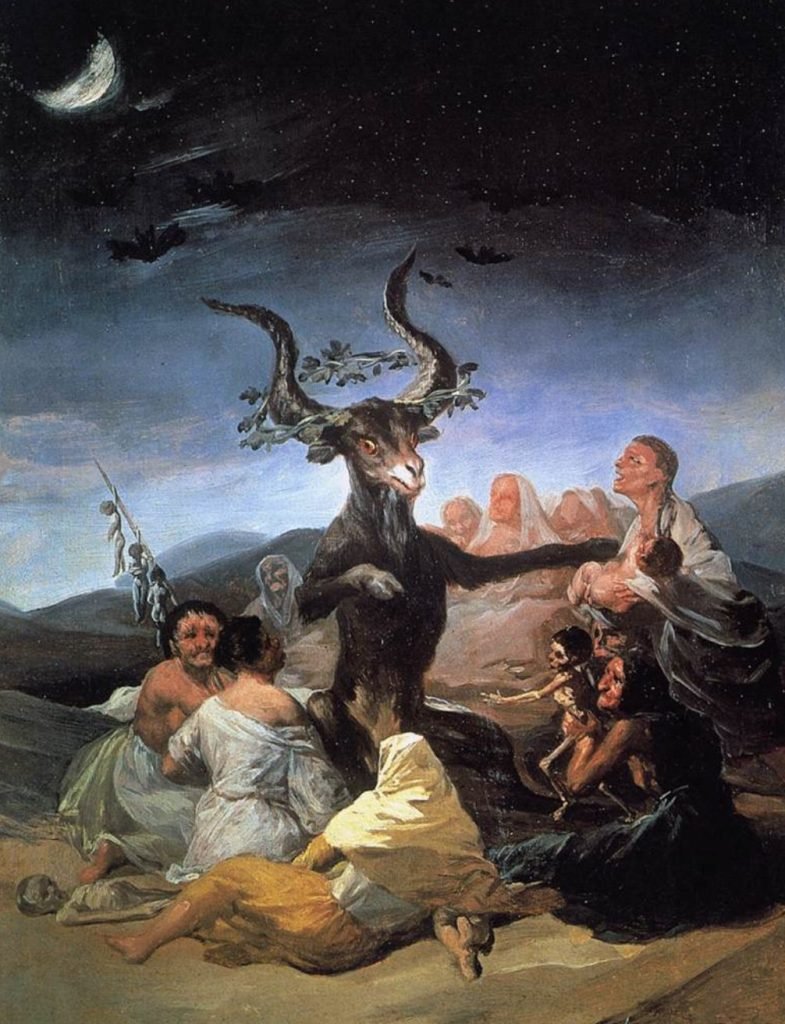Throughout history, the Devil represents all that is wrong with the world. “The Devil makes work for idle hands”, and it is the “Devil’s own job” when we do something hard.
Being a spiritual person, but I am not religious, so I wanted to dive deeper into this topic.
The Devil is evil. It is why Satan is so often depicted in pagan iconography: He is almost always made to look like rival religions’ gods. It is basic propaganda to portray your enemy as the embodiment of evil itself.
So thats the what who the devil is he?
The Devi, portrayed as a male, also referred to as Satan, is best known as the personification of evil and the nemesis of good people everywhere. His image and story have evolved over the years, and the Devil has been called different names in various cultures, including Beelzebub, Lucifer, Satan, Baphomet and Mephistopheles, with various physical descriptions.
Is the devil a politician?

With science to explain death, disease and natural disasters, the devil came under threat. How would Satan fit into a secular world?
An urbane and sophisticated devil took centre stage. Following a long tradition of identifying him with political and religious enemies, the devil was used to illustrate political opposition in caricature and satire. But the devil also became a byword for sinful indulgence in a commercial world – used to sell cars, confectionery and other luxury items.
Christian Religion!
Christians believed rival pagan gods like the Egyptian Bes and the Greek Pan were, in fact, demons, responsible for wars, disease and other human and natural disasters.
Scripture proclaims that “all things” were created by God and for God. It makes sense, therefore, that this comprehensive category—“all things”—surely includes the devil then?
Medieval devil
In the middle ages, a portrait of the devil emerged.
It was a time of hardship, the outbreak of the black death, which killed millions across Europe. With the church seemingly unable to protect its followers from the disease, depictions of Satan focussed on the gruesome horrors of hell, reflecting the mood of the time and reminding believers to refrain from sin.
There is a long tradition of associating the devil with the enemies of Christianity inside and outside the church.
When the church split during the Reformation, both Catholics and Protestants accused each other of being influenced by the devil.
Spells and seduction
In the early modern period, people were put on trial accused of making pacts with the devil and practising witchcraft and telling fortunes.
Satan was often depicted as a seducer, with women considered particularly vulnerable to his villainy. Images depict women in sexual alliance with the devil, tapping into a tradition which decried women as the weaker sex, more likely to sin as they were governed by their carnal desires. If Satan could corrupt women’s bodies, he threatened a community’s safety, sanctity and even fertility.
This was a way to rid the world of non christians as they would be afraid of anything non explained in the bible!!
Throughout the medieval era, mainstream Christian doctrine had denied the belief in the existence of witches and witchcraft, condemning it as a pagan superstition. Christian theologians eventually began to accept the possibility of collaboration with devil(s), resulting in a person obtaining certain real supernatural powers.

Francisco de Goya‘s Witches’ Sabbath (1789), which depicts the Devil flanked by Satanic witches. The witch-cult hypothesis states that such stories are based upon a real-life pagan cult that revered a horned god.
The witch-cult hypothesis has influenced literature, being adapted into fiction. Stories were told about witches ‘dancing naked with the devil’ all to scare ordinary people into dropping their pagan beliefs killing off surviving elements of pre-Christian religion.
100,000 people were prosecuted for witchcraft in Europe and British America. Between 40,000 and 60,000 were executed. The witch-hunts were particularly severe in parts of the Holy Roman Empire. Prosecutions for witchcraft reached a high point from 1560 to 1630, during the Counter-Reformation and the European wars of religion. Among the lower classes, accusations of witchcraft were usually made by neighbours, and women made formal accusations as much as men did. Magical healers or ‘cunning folk’ were sometimes prosecuted for witchcraft, but seem to have made up a minority of the accused. Roughly 80% of those convicted were women,most of them over the age of 40. In some regions, convicted witches were burnt at the stake.

Or not?! Erm the BIG BANG!

If the Christian God wasn’t responsible for the creation of Satan, then who was? Another powerful being? If so, then that being would—at least in one sphere of existence—be in charge. There would be a realm over which the God of the Bible wouldn’t be in complete control.
The first step in research into belief in ‘Satan’ is to consider the use of the word satan in the Old Testament. Depending on the context, the Hebrew word satan can act as a noun or a verb. The verb is usually translated as “to bear a grudge”/”to cherish animosity”/”to oppose”. The noun is usually translated as “opponent”/”adversary” and can refer to either a human or a heavenly being?
In Jewish and Christian tradition, there are many characters, especially in the Bible,
that have helped to make Judaism and Christianity among the most practiced religions in the
world today.
Other than God himself, there are many other figures that illustrate exemplary
behaviour, such as Abraham, Moses, King David, the Virgin Mary, and Jesus of Nazareth.
However, there are also figures that illustrate negative models, who lead God’s people away
from righteousness and into sin.
Among all of these, none have the infamy and fear-inducing power of Christianity’s fallen angel Satan. As the enemy of God himself, ruler of Hell, and source of all evil and suffering in this world, Satan has served as the inspiration behind some of humanity’s greatest fears. His power is so great that in the Gospels of the New Testament, he is aparently able to offer Jesus the world itself in return for devotion and loyalty.
But how could a lowly angel, fallen from the grace of God, have become a demon capable of terrorising all of creation?
In early Hebrew traditions, there was no devil, demons, or Hell. Evil andsuffering in the world instead had another source; God himself?
The Book of Isaiah 45:7 reads,
“I form light, and create darkness, I make weal and create woe: I the Lord do all these things”.
According to the Hebrew Bible or Old Testament, God alone controlled all events and
was responsible for all conditions within creation, both good and evil.
This idea, in Jewish traditions, became confusing and frustrating, and led to the
basic question of theodicy: How could a loving and benevolent God allow so much suffering
and pain on earth?
The eventual answer to this question within the religion of ancient Israel was found
during the Persian period, 539-332 BCE, the period in which Persia controlled the entire Near
East, including Israel. Perhaps the earliest point in Satan’s history may have its roots in the
Persian Empire, which in turn influenced ancient Judaism.
The ancient religion of Persia was Zoroastrianism, based on the teachings of a religious philosopher named Zoroaster who may have lived around 600 BCE. Among his teachings was the compelling idea of dualism.
According to dualism, evil does not stem from the good God or spirit known as Ahura Mazda,
“wise lord,” within the faith. Instead, there existed a separate evil being known as Ahriman,
“fiendish spirit,” also known as Angra Mainya, “evil spirit,” that created death, disease, and lies.
People had to choose whether to follow Ahura Mazda on the path of good or Ahriman on the
path of evil. The idea from Persia that God himself was separate from evil would have been an
acceptable answer to the early Jewish theodicy question and would have explained how there
could be such suffering in a world created by a loving God.
Anyone wishing to understand Christian theology, though, ought to tread carefully. Christianity is not a dualistic religion; it does not divide the world into polar opposites — good and bad, soul and body, heaven and hell. In fact, the early Church Fathers were very keen to avoid exactly this message.
From this was born the idea that God did not personally create suffering himself, but that he would instead use other lowly figures to complete such tasks with his approval. This idea would lay the foundation for Satan’s entrance into the world.
Within the Hebrew Bible (what Christian would call the Old Testament), the term Satan is found in ten instances.
This shows an interesting development of the concept of Satan within the Jewish
tradition.
New Testament, New Satan
It is during this period that Satan’s final development takes place before he emerges in the New Testament as God’s greatest adversary.
The first passage from this time that we will examine, the Life of Adam and Eve 17:4,
retells the story of Adam and Eve, but with important changes. Primarily, it changes the serpent
that tempted Eve to eat the forbidden fruit into Satan.
A snake appears, not just any ordinary snake (I don’t like snakes though). It talks! In fact, it’s quite chatty. Before we know it, this slithering creature has struck up a conversation with Eve, eventually luring both Adam and Eve—and the entire human race—into sin and death!
As the story unfolds, it becomes clear that this ancient serpent is a manifestation of Satan himself??
While the idea that the serpent of Eden was Satan is now a rather common assumption, it was relatively new in the 1st century C.E., primarily because Satan himself was a still a new idea.
In an earlier passage, found in the Life of Adam of Eve 12:3, it is revealed that Satan and his followers were cast away from heaven for refusing to worship God and Adam, the image of God, as they were commanded.
A similar attempt can be found in 1 Enoch, which was written somewhere between 200 to
approximately 60 B.C.E. This book expands on the idea of the angelic beings known as the
“Watchers” referred to in Daniel 4:13, 17 and 23 and attempts to connect them with the obscure
and puzzling account from Genesis 6:1-4, in which angels descended to earth to reproduce with
women. According to 1 Enoch 7, a group of “lust-filled” watchers under the leadership of a
creature called Azael descended to earth to mate with human women.
This created a race of giants known as the nephilim who brought demons into the world. For their treachery, God cast the perverse watchers into the fiery pit. In the final chapters of the book, Azael’s name is changed to Satan, showing the name’s growing popularity within the Jewish culture.
A similar 10 Pagels, The Origin of Satan, pp. 3-6 story is told in the Book of Jubilees, around 160 to140 B.C.E. In this version, the watchers, under the leadership of Mastema, descend to earth to teach justice and righteousness as commanded by God. However, they soon abandon his command and, as in 1
Enoch, mate with human women, creating a race of nephilim, which in turn brings demonic
spirits into the world. While God does cast most of these watchers into the fiery pit, Mastema is
allowed to keep one tenth of his followers. Both of these stories show that the adversarial force
against God had a hand in creating suffering on Earth and is a leader of a multitude of opposing
forces.
The final book which we will examine is 2 Enoch 29: 1-4, which contains what is
probably the most well-known origination story of Satan – the fall from grace into a pit. Much
like the previous books, it pulls from earlier scripture, specifically Isaiah 14:12 and Ezekiel
28:17-18. Satan appears as a high ranking officer in the cosmic army named the saba’ot,
“angelic hosts.” With his followers, he attempts to overthrow the Kingdom of God to gain his
own power. However, the rebellion fails and he is cast out of heaven and is said to fall endlessly
over the “bottomless pit.” This passage draws from Isaiah the allusion to a Canaanite myth
about an ancient rebellion led by “Day Star,” or “Morning Star,”12 from which arose the coinage
of a popular name for Satan, that is the name Lucifer, the Greek form of Hebrew “Day Star.”
In conclusion, the writing of the New Testament would bring to an end the early
development of Satan and bring him center stage in Christianity as the most powerful opponent
of God, Jesus Christ, and humankind. Much like many concepts within Judeo-Christian tradition,
the development of Satan was a slow and gradual process. It took hundreds of years to make him
11 Mastema from the Book of Jubilees is also blamed for other actions of evil, including the testing of Abraham by almost
burning his son Isaac, the worshipping of the Golden Calf while Moses spoke with God on Mount Sinai, and provokes Gentiles. The merciless King of Hell who, as the New Testament book of Revelation has it, will ultimately fall to God at the end of time.
References
Breytanbach, C. “Satan.” Dictionary of Deities and Demons in the Bible DDD. By K. Van Der.
Toorn and Bob Becking. Leiden: Brill, 1999. N. pag. Print.
Comay, Joan, and Ronald Brownrigg. “Satan.” Who’s Who in the Bible. New York: Bonanza,
- 404-08. Print.
Hamilton, Victor. “Satan.” The Anchor Bible Dictionary. By David Noel Freedman. Vol. 5. New
York: Doubleday, 1992. N. pag. Print.
Pagels, Elaine H. The Origin of Satan. New York: Random House, 1995. Print.
Wray, T. J., and Gregory Mobley. The Birth of Satan: Tracing the Devil’s Biblical Roots. New
York: Palgrave Macmillan, 2005. Print.



